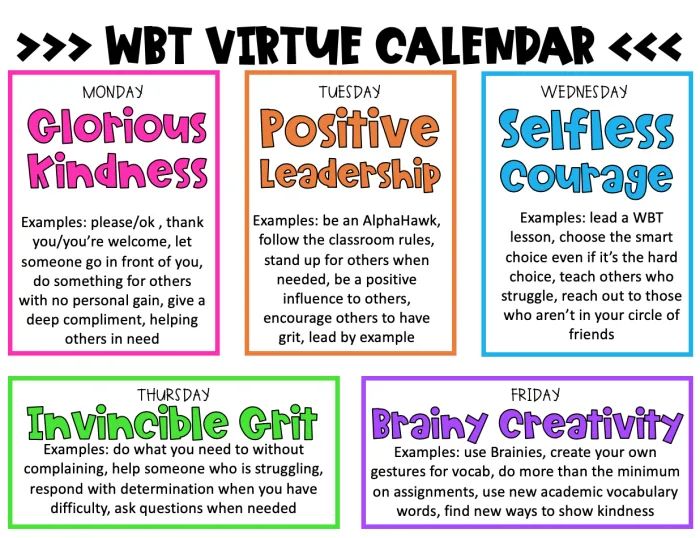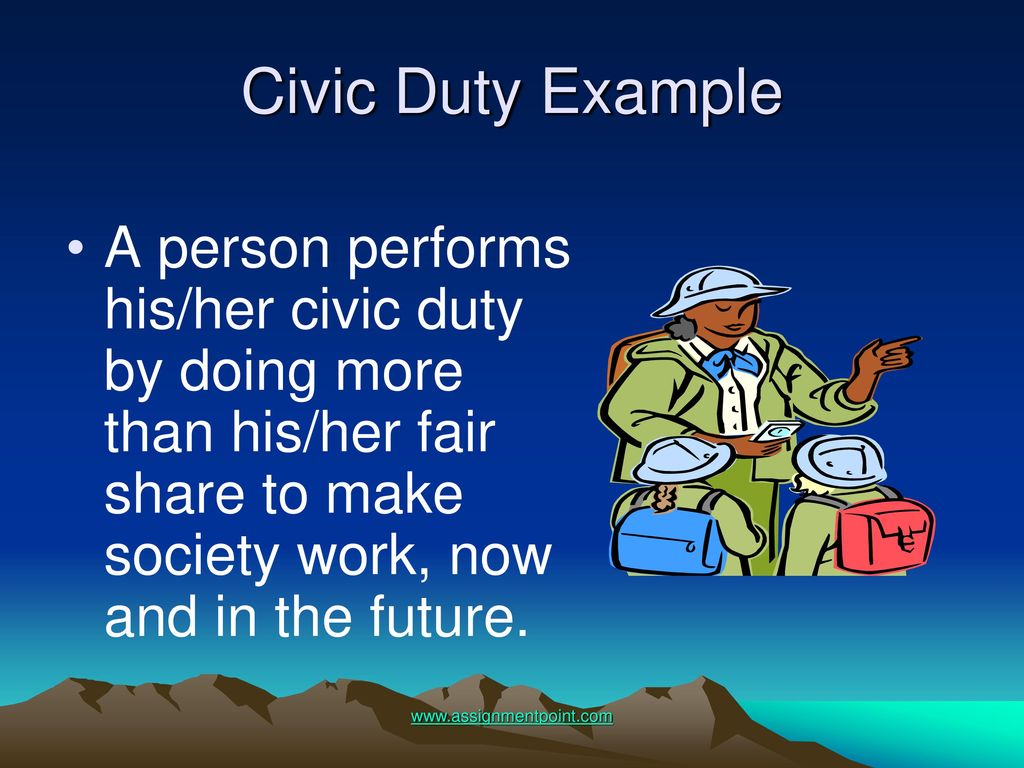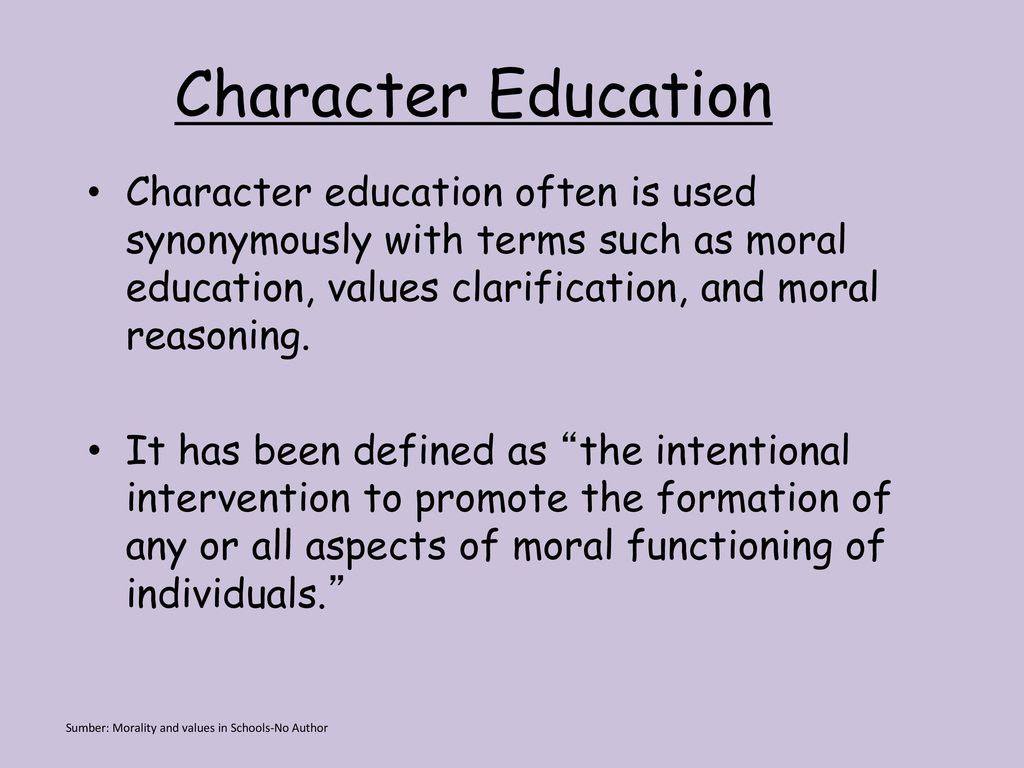Character education examples: Character education: as important as academics?
Character education: as important as academics?
For years parents and teachers discussed whether or not to teach values in schools. That debate ended when two boys opened fire at Columbine High School in 1999, killing 15 students, including themselves. In the wake of that tragedy, the worst incidence of school violence in our nation’s history, discussion has shifted to which values to teach and how to teach them effectively.
“In the long run, I’m not sure that it matters if a student learns algebra, but I know that it matters if a student learns right from wrong,” says George Booz, former principal at South Carroll High School in Sykesville, Maryland, a school nationally recognized for its character education program. “I know that it matters if a person learns that in this world we have to help each other. I don’t see how we get around that.”
Character education programs have sprouted up around the country, some with astonishing, quantifiable results:
In 1993 the playground at Seattle’s Gatzert Elementary School, a high-poverty school where a third of the children are homeless, resembled a battlefield at lunch recess. The only way to control the fistfighting and violent behavior was to line up the 40 to 50 troublemakers along the school wall and keep an eye on them. Today only minor problems occur on the playground, and no children are lined up against the wall.
The successful transformation took a lot of hard work on the part of staff and students, according to Judy Ginn, a third grade teacher at the school. New staff, prevention intervention specialists, paying attention to changing the climate and culture at the school, and the Giraffe Heroes Project, a hands-on character education curriculum that she and other teachers at the school have used in their classrooms since 1994, all played a part.
Advertisement
Through the Giraffe Project, children work with adult volunteers and learn to be like giraffes – that is, animals who stick their necks out, have big hearts, are persistent, do no harm and make the world a better place through their actions. The children come up with community-based projects, such as canned food drives or anti-litter campaigns, which they organize themselves.
In Albuquerque, New Mexico, at gang-plagued Garfield Middle School, Character Counts, a character education program that highlights six facets of character through a prescribed curriculum, was introduced with great success. In the first year, the number of recorded incidents of school violence declined from 91 to 26, according to Principal Louis Martinez.
After the Round Rocks School District in Austin, Texas, instituted character education as part of the curriculum, Jollyville School, an elementary school in the district with 576 students, reported a 40% percent drop in discipline referrals.
What is character education?
Character education is the teaching of core values. For example, the Character Counts program defines six teachable “pillars of character”: trustworthiness, respect, responsibility, fairness, caring and citizenship.
In his book, The Educated Child, William J.
Character education is most effective when it is spread throughout regular school courses. In science, teachers can discuss the value of honesty in data, and in math, students can learn persistence by sticking with a problem until they get the right answer. History holds valuable lessons and heroes of character, such as the honesty of Abraham Lincoln, who walked three miles to return 6 cents.
During the 1960s and early 1970s, many teachers shied away from teaching about values because they did not feel it was their place to impose their own values on their students. But now they are seeing how including character education can transform a school community.
Effective models
Not all character education programs are effective, according to Bennett. Lofty discussions about gun control, abortion and same-sex marriages don’t teach children right from wrong or how to get along with others. Beware of school administrators, he writes, who simply post signs that say “Help others,” or “Thanks for being kind today” and think they have done their job. Effective programs engage children in hands-on activities where good character is emphasized throughout the school environment as well as through the curriculum.
Character education includes having high standards for students’ academic success, too. “When they are challenged to work up a mental sweat, they learn about virtues such as industry and persistence,” writes Bennett.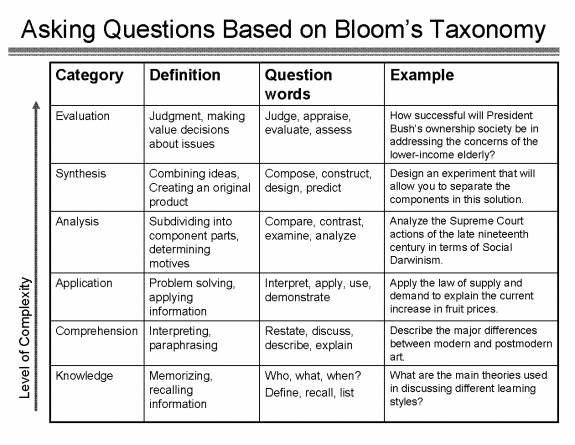
The parent’s role
Many teachers complain that parents are too lax and don’t provide enough discipline at home. Character education works best when schools and families work together. Here is what you as a parent can do to help:
• Ask your child’s teacher or principal whether the school has a character education program. If the school has a program, find out how well it is working and what you can do at home or as a volunteer at school to support the program. If the school doesn’t have a program, check the resources section below to learn about successful programs that you can help bring to your school.
• Ask to see your child’s homework. Encourage your child to establish good work habits. Be firm in your expectations that your child complete his assignments neatly, thoroughly and on time.
• Take action if your child is learning bad habits or shows a lack of discipline. Express your concerns about bad habits to your child’s teacher or bring up the topic at the next parent-teacher conference.
• Demonstrate courage, respect and compassion through your actions. Talk to your child about good character, and model the behavior you want your child to have. Talk about other people you know who are examples of good character.
Character Education Ideas, Tips and Programs
We value your privacy. We use cookies and other technologies to keep the site reliable and secure, tailor your experience, measure site performance and present relevant offers and advertisements, as described in our Privacy Policy.
Got it!
|
Resources / School Posted by Julie David Spend time in a classroom setting and it becomes clear that guidance in character development is as important as subject-matter learning.
What Character Education Is and Isn’t
Character Education Should:
Character Education Shouldn’t:
Organize a student club for positive behavior with an online sign up. SAMPLE.
Tips To Make Your Program Successful
Ideas for Schoolwide Character Programs
Organize a charitable donation drive with an online sign up! SAMPLE.
Ideas for Classroom Character Programs
Organize a class party with an online sign up! SAMPLE.
How to Evaluate and Update Your Program
Remember, whether you are just starting your character education program or it’s already cruising along, you are not alone. Educators recognize that a safe and healthy environment fosters learning. You can’t have one without the other.
Julie David lives in Charlotte, N.C., with her husband and three daughters. She is a former teacher. |
SignUpGenius is a tool that I use in my classroom for many things! Conferences, parties, supplies, field trips, beautification days, etc. Nicole McCarty |
Resources / School
Spend time in a classroom setting and it becomes clear that guidance in character development is as important as subject-matter learning. Here are character education ideas and tips to help you get an A+ in cultivating a caring and safe place for students to learn.
What Character Education Is and Isn’t
Character Education Should:
- Go beyond head-learning to encourage heart-learning.
- Get kids to consider how their behavior and attitudes affect others.
- Emphasize that everyone has the chance to be a “good guy.”
- Strive for positive interactions. Shame doesn’t motivate in a lasting way.
- Use kid-friendly language.
Character Education Shouldn’t:
- Be about perfection. Students should see character growth throughout the year.
- Come from only worksheets and videos. Children need to put ideas into practice (and see it modeled in their teachers and administrators).
- Be about rule following. Character education should go beyond kids doing what they are told.
- Overwhelm you with work. A lot of character education is talking and processing the choices we have to make every day.
- Be confined to the classroom. It should penetrate the playground, lunchroom and home as well.
Organize a student club for positive behavior with an online sign up. SAMPLE.
Tips To Make Your Program Successful
- Get Teacher Buy-in – A character program for kindness and respect will never work if your school culture is back-biting and negative.
Character education starts with living examples from the top down.
- Promote Best Practices – Teachers need to understand the importance of character education to help students feel safe and respected. Do some brushing up on best practices for teachers to help promote character in the classroom.
- Keep it Contained – Find a program that doesn’t cut too much into instruction time or you will negate tip No. 1.
- Keep it Simple – Words like empathy and resilience may not be familiar to small people, so be sure that character traits can be explained with familiar examples and real-life practice.
- Tailor to Your Community – Different learning communities are as diverse as the real world, so make sure your character education speaks to the real issues that your students face.
- Persevere – Don’t give up too soon. Good character programs, especially school-wide ones, often take several years for everyone to catch on.
- Take Character Everywhere – The program needs be fully integrated into the school. Make it a language you speak on the playground, at field trips or any time you are interacting as a class, so kids see character matters wherever you go.
- Keep it Real – Children with high-stress home environments often have physical needs that affect their emotional capabilities. Factor in real needs — like hunger or sleep deprivation — so your character education fits with real lives.
- Involve Families – When possible, ask families to get on board with character education and start to use the common language of your program at home as well.
- Retool Lesson Plans – For classroom character education, find new ways to use curriculum you already have in place to integrate character lessons. No need to recreate the wheel.
Ideas for Schoolwide Character Programs
- Bucket Fillers – Teach kids the power of words to lift people up or drain them.
Many creative ideas have been dedicated to the idea of bucket filling and for good reason. It’s a great word picture for little ones in particular.
- The “Six Pillars of Character” – This widely used program emphasizes trustworthiness, respect, responsibility, fairness, caring and citizenship with a variety of school-wide activities.
- THINK – This program uses an acrostic to help students think about the impact of words
- Is it True?
- Is it Helpful?
- Is it Inspiring?
- Is it Necessary?
- Is it Kind?
- Build a Caring Community – A building blocks approach that includes kindness, respect, honesty (and more).
- Buddies Program – Partner older students with younger ones and give them regular opportunities to work together.
- Cultures are Cool – Help students understand the importance of diverse communities and that embracing differences creates understanding and empathy.
- Habit of the Week – Pick a different building block each week. This curriculum is based on the Seven Habits of Happy Kids, which includes “seek first to understand, then to be understood.”
- Critters of Character – Associate an animal with a desired character trait, and this becomes a common language in the school.
- Character Calendars – The school creates a calendar with artwork and quotes that support good character throughout the year.
- Whole-School Character Texts – The entire school reads a specific book that emphasizes character, and upper grades plan projects or a “character festival” that they open to lower grades.
Organize a charitable donation drive with an online sign up! SAMPLE.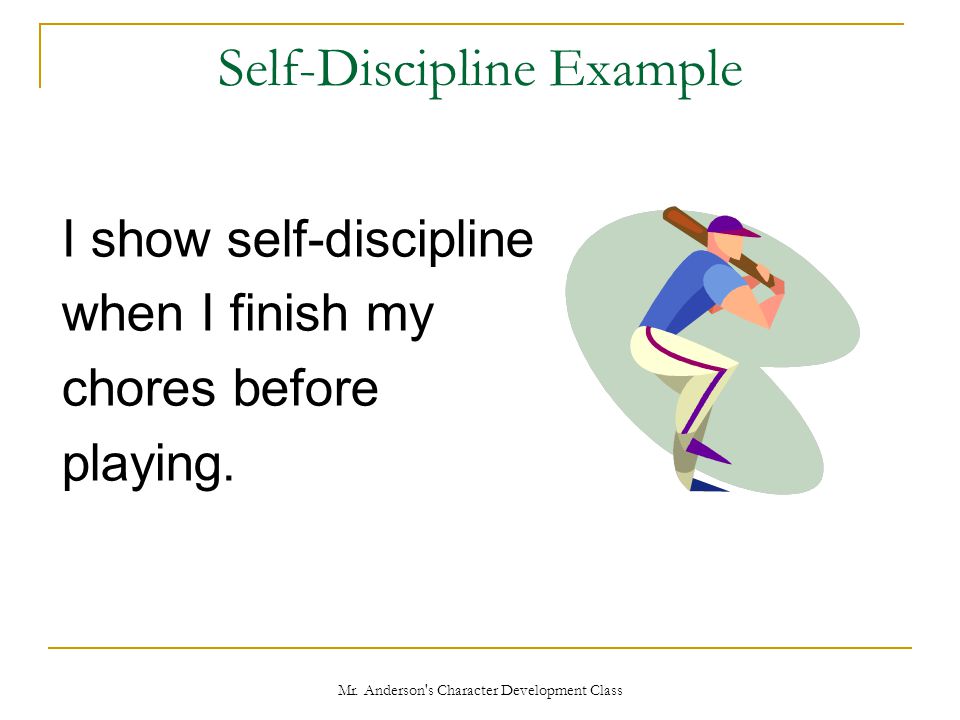
Ideas for Classroom Character Programs
- Classroom Meetings – These are a great starting point to teach taking turns, establishing goals and solving problems.
- Kindness Matters – This one theme can springboard into lessons on apologizing, showing respect, laughing inappropriately, taking care of the classroom and more.
- Anti-Bullying – Programs should help kids think about their own experiences, as well as increase respect for differences and similarities among their classmates.
- Peacemakers vs. Peacebreakers – This helps students reflect on behaviors that cause conflict versus behaviors that promote a peaceful classroom environment.
- Good Classmates – Define what a good classmate is, does, says and is not. Students can help brainstorm.
- Trait of the Week – Pick four top character qualities and each month repeat the traits but with new activities.
- A-Z Character – Display a poster using the alphabet and character traits (yes, you might have to use Xcited, but we can make that Xception, right?)
- What Scholars Do – We can all say what a doctor does, but what do scholars do? Use this idea as springboard to establish classroom character expectations and responsibilities.
- Stalk your Stuff – This concept promotes being responsible for your supplies and personal belongings.
- Cooperative Learning Groups – These groups help students work together on a task. Take time beforehand to discuss good group behavior and afterward to reflect on working together.
Organize a class party with an online sign up! SAMPLE.
How to Evaluate and Update Your Program
- Assess your program’s goals from the start: Do you want to have fewer conflicts in the classroom? More observation of certain character traits? Be realistic about what to expect.
- Send home evaluations (or having them filled out during parent-teacher conferences) about character issues. This can help gather information on the effectiveness of a character education program.
- Be careful about rewards. If students begin behaving just for rewards, it may be time to cut back on external motivators and get back to reflection on why we practice good character.
- Bring in outside speakers or consider asking parents to come in to talk about different character issues. Connecting character back to the home is always a great addition to your program.
- Don’t reinvent the wheel. You may have been teaching for 30 years, but these kids are in their grade for the first time, and it’s all new to them. If something isn’t broke, you don’t need to fix it.
Remember, whether you are just starting your character education program or it’s already cruising along, you are not alone.
Julie David lives in Charlotte, N.C., with her husband and three daughters. She is a former teacher.
Education of character
As noted, character is formed, developed and changed in the practical activity of a person, reflects the conditions and way of life.
1 Education of a child’s character
2 Development of character
3 Fundamentals of education of character
4 Conditions for education of character
Already at preschool age, the first contours of character are outlined, a habitual way of behavior, certain attitudes to reality begin to take shape. Manifestations of collectivism, perseverance, endurance, courage in preschool age are formed primarily in the game, especially in collective plot games with rules. Of great importance are the simplest types of labor activity available to a preschooler.
Under the influence of the requirements of parents and educators, their personal example, the child gradually develops concepts of what is possible and what is not, and this begins to determine his behavior, lays the foundations for a sense of duty, discipline, endurance; The child learns to evaluate his own behavior.
Development of character
Entering school begins a new stage of character formation. For the first time, the child is faced with a series of strict rules and school duties that determine all his behavior at school, at home, in public places. These rules and duties develop the student’s organization, systematicity, purposefulness, perseverance, accuracy, discipline, diligence. An exceptionally important role in the formation of character is played by the school team. At school, the child enters into new relationships with teachers, into relationships of community and mutual assistance with comrades.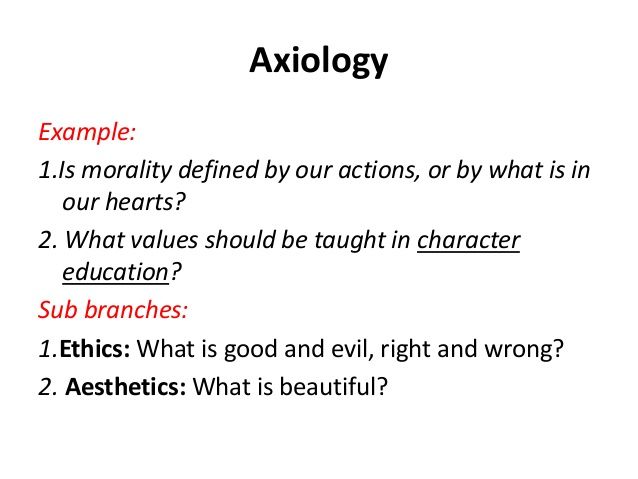
Character traits develop especially intensively in adolescents. A teenager, to a much greater extent than a younger schoolchild, participates in the life of adults, higher demands are placed on him. A teenager in his educational and social activities is already much more guided by the motives of public order – a sense of duty and responsibility to the team, the desire to maintain the honor of the school, detachment, class.
Upbringing has a decisive influence on the character of a child. There are no children whose character could not be re-educated and who could not be instilled with certain positive qualities, eliminating even the negative traits that seem to have already taken root in them.
Fundamentals of character education
A necessary condition for character education is the formation of a worldview, beliefs and ideals.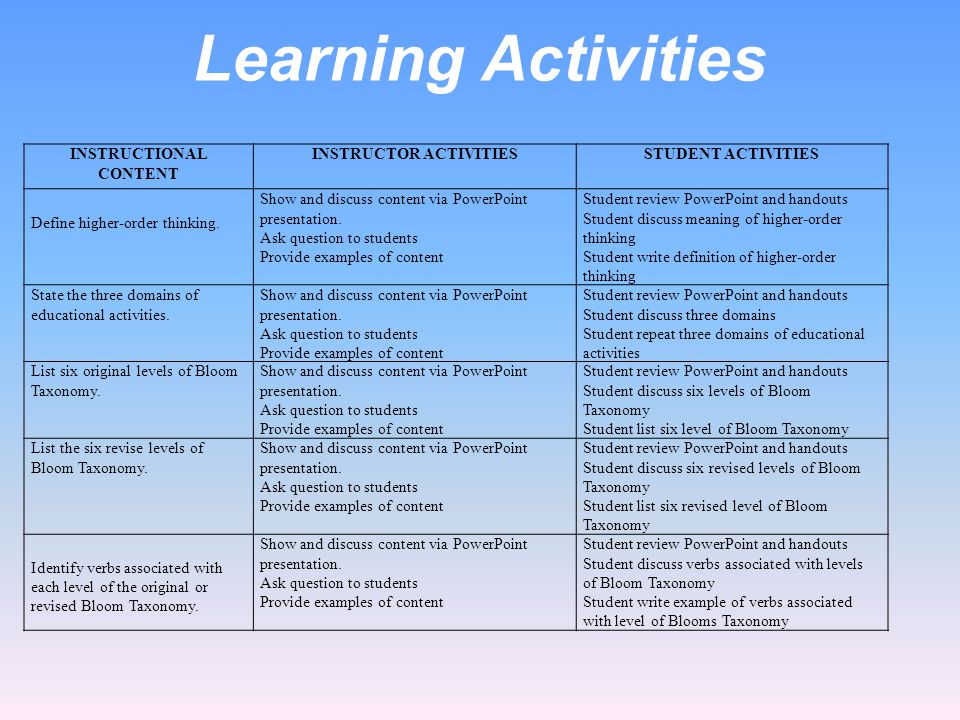
The task of forming a worldview, beliefs should be solved in unity with the education of certain forms of behavior, in which the system of human relations to reality could be embodied. Therefore, in order to nurture socially valuable character traits, it is necessary to organize the child’s play, educational, and labor activities in such a way that he can accumulate experience in correct behavior.
In the process of character formation, it is necessary to reinforce not only a certain form of behavior, but also the corresponding motive for this behavior, to put children in such conditions that their practical activities correspond to their ideological education, so that they apply the acquired principles of behavior in practice. A. S. Makarenko emphasized that it is very important to constantly exercise children in the right act, to organize a kind of “gymnastics of behavior”, to consolidate the correct forms of behavior.
Conditions for the education of character
If the conditions in which a child lived and acted did not require him, for example, to display restraint or initiative, then the corresponding character traits would not be developed in him, no matter how high moral ideas were instilled in him verbally. It is impossible to educate a courageous person if you do not put him in such conditions when he could and should have shown courage. An education that eliminates all the difficulties in the life of a child can never create a strong character.
Labor is the most important means of educating character. In serious and socially significant work, connected with overcoming difficulties, the best character traits are brought up – purposefulness, collectivism, perseverance.
Literature and art influence the education of character. In books, films, performances, examples of how a person feels and acts are given, the features of his character are clearly outlined. The images of literary heroes and their behavior often serve as a kind of model for the child, with which he compares his behavior.
What parents do often affects a child’s life more than what they say. How a parent relates to work, how he follows social norms of behavior, whether he controls himself and his feelings, what is the style of his work – all this is of great importance for educating the character of children. If a parent is persistent in the fight against difficulties, if he firmly fulfills his obligations, it is easier for him to achieve the same in his pupils, who will strive to develop the same traits in themselves. Irritability, incontinence, rudeness, passivity, indiscretion of the parent will have a negative impact on the child.
Ethical or moral conversations occupy a significant place. Their goal is to form correct moral ideas and concepts in children. All this is all the more necessary because some children have wrong ideas, prejudices and delusions in the field of moral ideas (false understanding of friendship and fellowship, courage, perseverance, etc.). At an older age, one of the ways of character formation is self-education.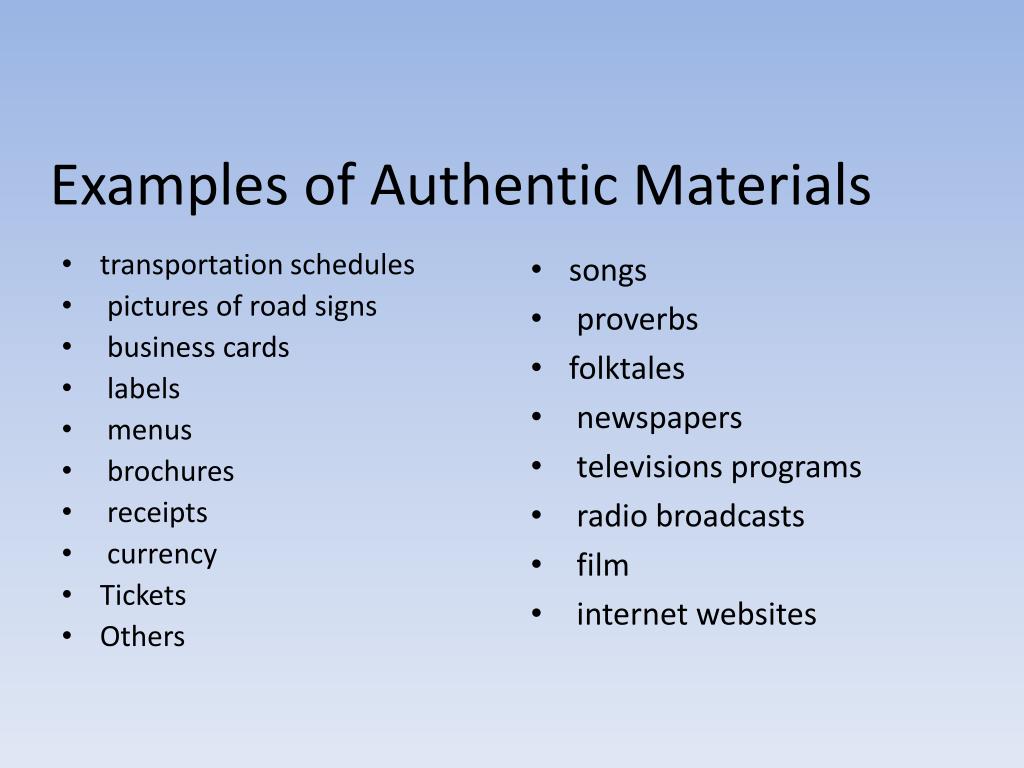
Especially important is the need for an individual approach to character development. An individual approach requires the selection and implementation of such educational activities that would correspond to the characteristics of the child’s personality and the state in which he is currently located. One should be given a stern warning, another should be mildly scolded, and the third should be given a reproachful look. One must be praised in order to raise his faith in his own strength; in relation to another, this should not be done, so as not to lead him to self-conceit, arrogance.
It is absolutely necessary to take into account the motives of actions, since differences in motives determine differences in educational measures that must be carried out in response to a particular act of the child. An individual approach requires reliance on the positive that each child already has in the area of his interests, attitudes towards people, to certain types of activity, etc.
In order to educate a child’s character taking into account his individual characteristics, you should know them well, that is, study his personality comprehensively and deeply. Studying a child is a relatively lengthy process. It is necessary to keep brief records of observations, collecting various materials about the activities and behavior of the child, about his attitude to work, to the people around him, to his comrades, to himself. Only a good knowledge of the child will make it possible to outline individual measures for his further education or re-education and will lead to the desired results.
Formation of character in children and ways of its upbringing
As noted, character is formed, developed and changed in the practical activity of a person, reflects the conditions and way of his life.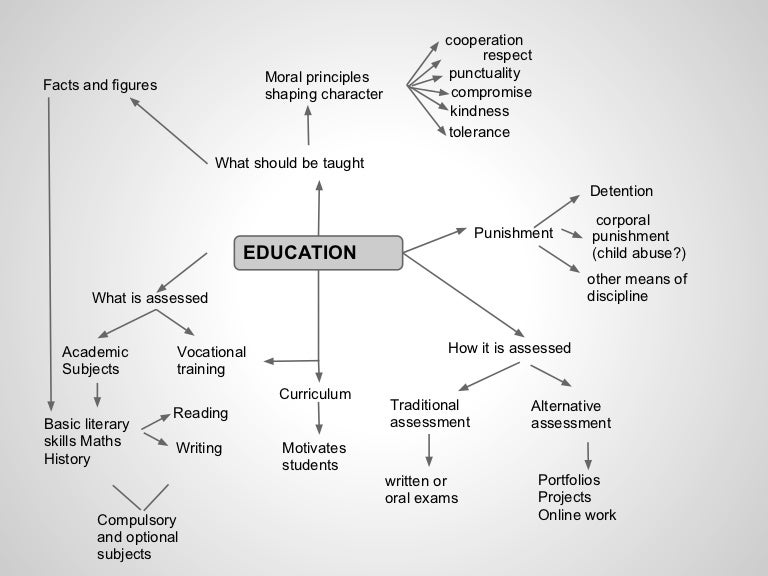
The formation of character begins in early childhood. Already at preschool age, the first contours of character are outlined, a habitual way of behavior, certain attitudes to reality begin to take shape. Manifestations of collectivism, perseverance, endurance, courage in preschool age are formed primarily in the game, especially in collective plot games with rules.
The simplest types of labor activity available to a preschooler are of great importance. By performing some simple duties, the child learns to respect and love work, to feel responsibility for the task assigned. Under the influence of the requirements of parents and educators, their personal example, the child gradually develops concepts of what is possible and what is not, and this begins to determine his behavior, lays the foundations for a sense of duty, discipline, endurance; The child learns to evaluate his own behavior.
Entering school begins a new stage in the formation of character. For the first time, the child is faced with a series of strict rules and school duties that determine all his behavior at school, at home, in public places.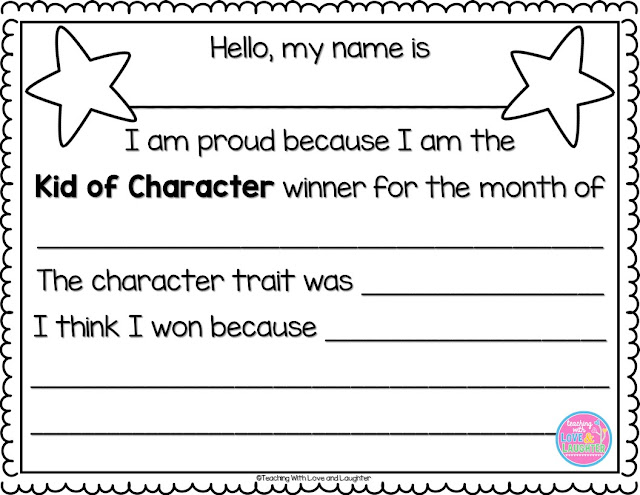
These rules and duties develop the student’s organization, systematic, purposefulness, perseverance, accuracy, discipline, diligence. An exceptionally important role in the formation of character is played by the school team. At school, the child enters into new relationships with teachers, into relationships of community and mutual assistance with comrades. He develops a consciousness of duty and responsibility to the collective of his class, school, a sense of camaraderie, collectivism. Especially intensively develop character traits in adolescents. A teenager, to a much greater extent than a younger schoolchild, participates in the life of adults, higher demands are placed on him. A teenager in his educational and social activities is already much more guided by the motives of public order – a sense of duty and responsibility to the team, the desire to maintain the honor of the school, class.
Upbringing has a decisive influence on a child’s character. There are no children whose character could not be re-educated and who could not be instilled with certain positive qualities, eliminating even the negative traits that seem to have already taken root in them.
What are the ways of developing character?
A necessary condition for the education of character is the formation of a worldview, beliefs, and ideals. The worldview determines the direction of a person, his life goals, aspirations, moral attitudes follow from the worldview, by which people are guided in their actions. The task of forming a worldview, beliefs should be solved in unity with the education of certain forms of behavior, in which the system of human relations to reality could be embodied. Therefore, in order to nurture socially valuable character traits, it is necessary to organize the child’s play, educational, and labor activities in such a way that he can accumulate experience in correct behavior.
In the process of character formation, it is necessary to reinforce not only a certain form of behavior, but also the corresponding motive for this behavior, but also the corresponding motive for this behavior, to put children in such conditions that their practical activities correspond to their ideological education, so that they apply in practice the learned principles behavior.
Labor is the most important means of educating character. In serious and socially significant work, connected with overcoming difficulties, the best character traits are brought up – purposefulness, collectivism, perseverance. The most important condition for the correct organization of educational activities is the close coordination of the educational work of the school with the corresponding influences of the family.
Literature and art influence the education of character.
The education of character is also influenced by the personal example of the educator, be it parents or teachers. What caregivers do often has a far greater impact on a child’s life than what they tell them. How a teacher relates to work, how he follows social norms of behavior, whether he controls himself and his feelings, what is the style of his work – all this is of great importance for educating the character of children.
An important role in the formation of character is played by the living word of the teacher, educator, with which he addresses the child. A significant place is occupied, in particular, by ethical or moral conversations. Their goal is to form the correct moral ideas and concepts in children. For older students, one of the ways of character formation is self-education. However, even in younger schoolchildren, the teacher should cultivate the desire to get rid of certain shortcomings, undesirable habits, and develop useful habits.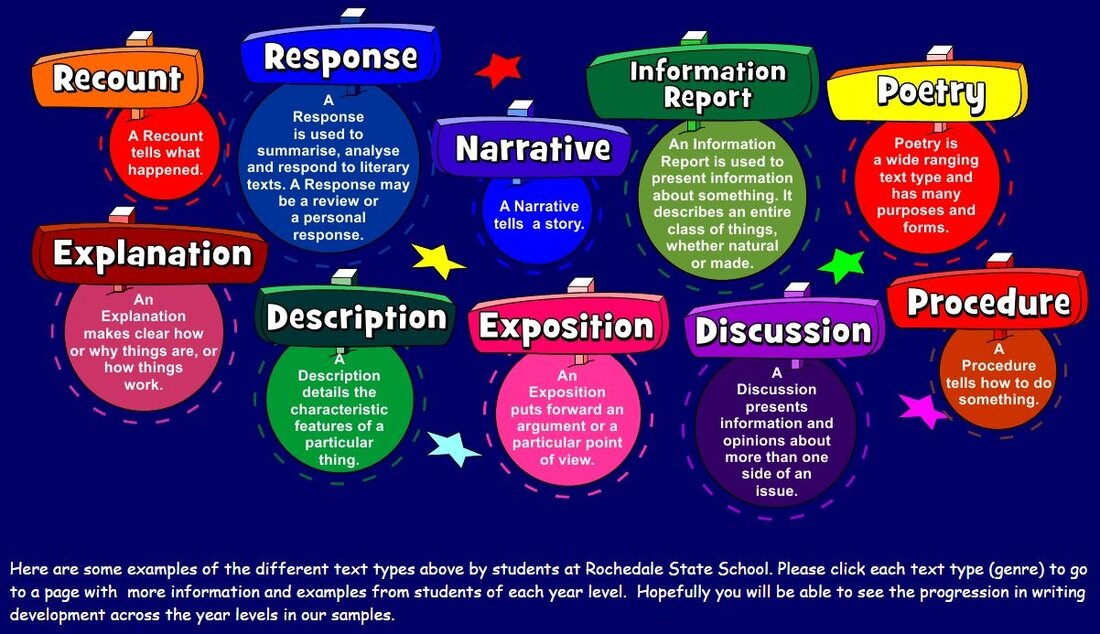
An individual approach requires the selection and implementation of such educational activities that would correspond to the characteristics of the student’s personality and the state in which he is currently located.
It is absolutely necessary to take into account the motives of actions, since differences in motives determine the differences in educational measures that must be carried out by the teacher in response to a particular act of the student. An individual approach requires reliance on the positive that each child already has in the area of his interests, attitudes towards people, to certain types of activities, etc. By developing the already existing valuable features in every possible way, encouraging positive actions, the teacher can more easily overcome negative traits character in children.
In order to educate the character of a student taking into account his individual characteristics, one should know them well, that is, study the student’s individuality comprehensively and deeply.







 Here are character education ideas and tips to help you get an A+ in cultivating a caring and safe place for students to learn.
Here are character education ideas and tips to help you get an A+ in cultivating a caring and safe place for students to learn. 
 1.
1. Factor in real needs — like hunger or sleep deprivation — so your character education fits with real lives.
Factor in real needs — like hunger or sleep deprivation — so your character education fits with real lives. 
 ”
”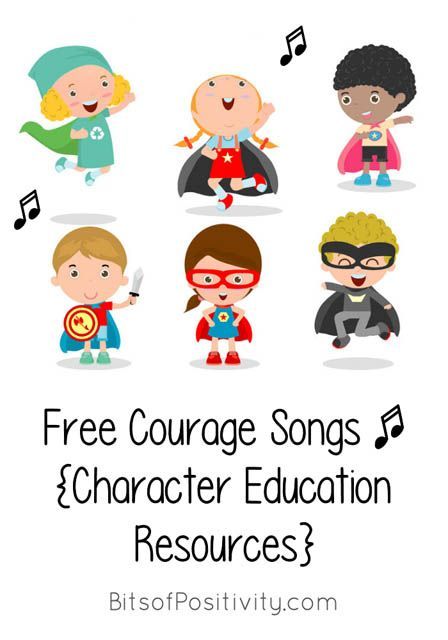

 If students begin behaving just for rewards, it may be time to cut back on external motivators and get back to reflection on why we practice good character.
If students begin behaving just for rewards, it may be time to cut back on external motivators and get back to reflection on why we practice good character. Our PTO utilizes SignUpGenius for meetings, luncheons, teacher appreciation week, fall festivals and many other events. This organizing tool saves me paper, time and headaches!
Our PTO utilizes SignUpGenius for meetings, luncheons, teacher appreciation week, fall festivals and many other events. This organizing tool saves me paper, time and headaches!
 Character education starts with living examples from the top down.
Character education starts with living examples from the top down.
 Many creative ideas have been dedicated to the idea of bucket filling and for good reason. It’s a great word picture for little ones in particular.
Many creative ideas have been dedicated to the idea of bucket filling and for good reason. It’s a great word picture for little ones in particular.
